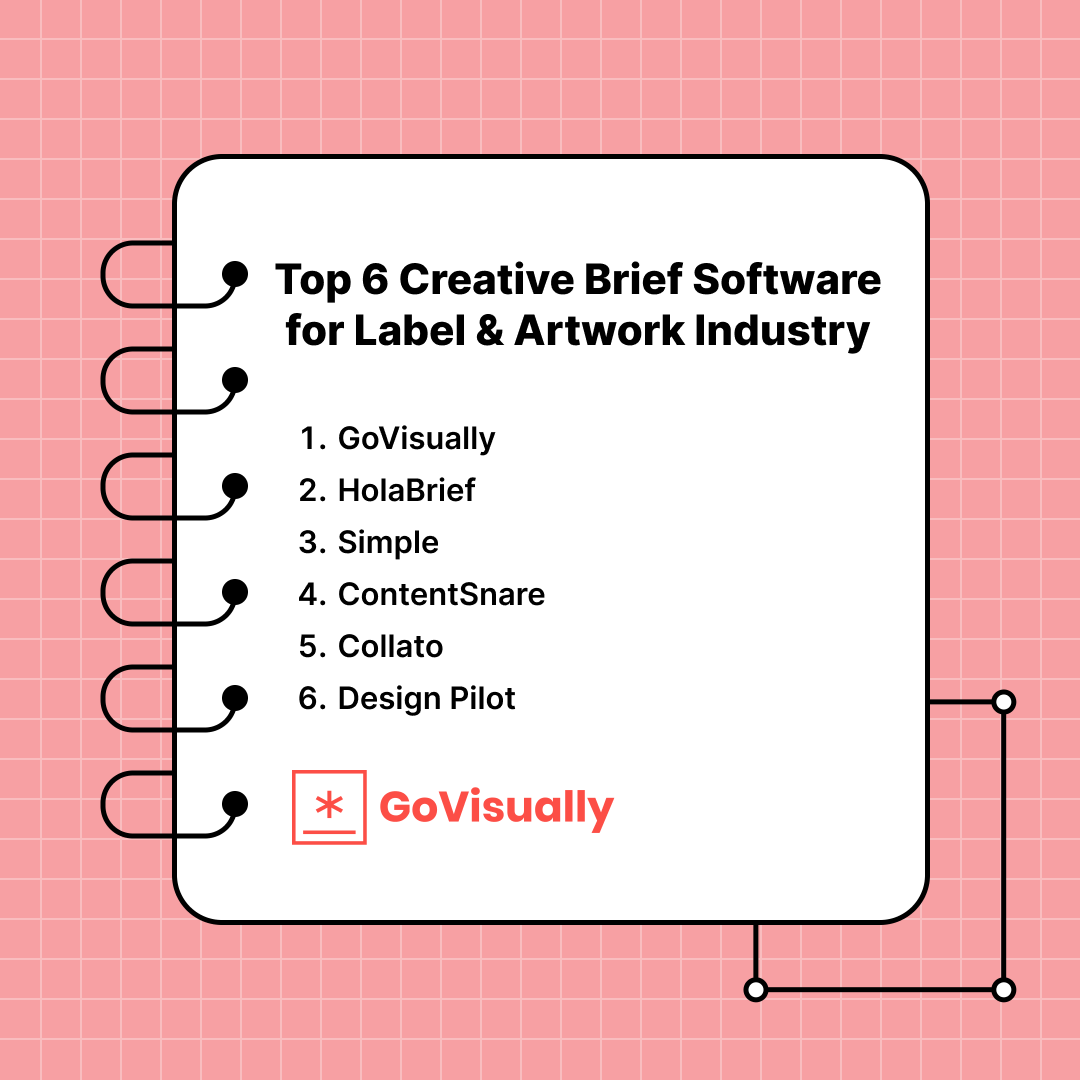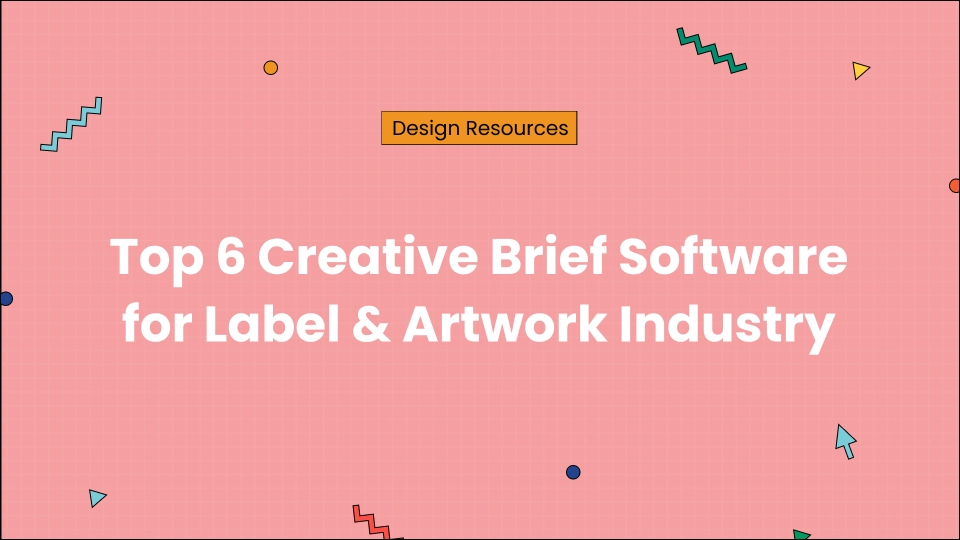When we get a project, the first thing we do is write a brief of what’s needed out of it. This often looks simple, but when we sit with it, it turns out to be lucrative.
In a recent study, we saw that 83% of marketing agencies find creating an effective brief difficult, regardless of their years of experience. Studies also found that 30% of agency time is lost due to inadequate client briefings. Not only does this inefficiency eat away at your hours, but it also strains internal resources, delays market entry, and aggravates your marketing project management.
One missed point can lead to confusion and wasted resources in the future. In fact, marketers estimated that poorly curated briefs and misinformed projects waste over one-third of marketing resources.
These staggering statistics and marketers’ experience with creative briefs underscore the immediate need for creative brief software, providing a secure foundation for your project management.
Creative briefs provide clarity, direction, and alignment for creative projects, guiding teams in understanding objectives, target audiences, and key messages for effective communication and successful outcomes. Want to learn more about creative briefs? Keep on reading to know;
- What is a creative brief, and what comes with it?
- How does a design brief generator software make things easier?
- The 7 best graphic design brief generators out there
Table of Contents
What is a creative brief, and what should we include in it?
A creative brief is a concise document that outlines a project’s objectives, requirements, and expectations, amongst other details. If we look at it in another way, then it’s like a plan that tells everyone working on a project what they need to do and why.
When you create a brief, you answer all the important questions about a project, such as its goals, budget, etc. After studying multiple design templates, we found that the following are the most important elements of a creative brief:
- About the project, its purpose, and scope.
- What are the main goals of the project, or what do you want to achieve with this creative work?
- The intended audience for the project. Who are you trying to reach with this creative work?
- The main points or messages that need to be communicated through the project.
- The tone or style that should be reflected in the creative work. Is it formal/informal or Serious/playful?
- The specific deliverables that are expected as part of the project.
- The timeline for the project, including key milestones and final delivery dates.
- The monetary and resource budget that is available for the project.
- Brand guidelines
You might also be interested in How to Write a Killer Creative Brief – From Start to Finish – GoVisually.
How does creative brief software improve the briefing process?
Usually, creative briefing software has features like customizable templates, collaborative tools, integration of multiple stakeholders, an approval system in place, etc. These features make it easy for users to streamline the briefing process and improve communication among team members.
So, to sum up the advantages, creative brief software offers the following:
- They usually have many ready-made templates available. By using them, we can ensure that all the necessary information is captured.
- A good design brief generator software also has a brilliant communication system with features like comments, mentions, and approval workflows.
- Most of the creative brief software also offer a version tracker. Version history tracking can reduce the risk of errors or miscommunication.
- By automating repetitive tasks and providing analytics and reporting features, it helps to improve and optimize workflows.
- Most importantly, it simplifies the entire briefing process, which can improve the quality of creative outcomes.
What are the key features to look for in creative brief software?
When considering creative brief software, here are key features to look for:
1. Customizable templates
One of the most basic features of briefing software is its collection of brief templates. If you are a designer, make sure that the tool has enough graphic design brief generator templates with enough flexibility while maintaining structure.
2. Communication system
When you review graphic design idea generator tools, look for features like comments, mentions, and approval workflows. These tools will help you improve communication and make the approval system easier.
3. Integration of other tools
When working with design briefs, the software needs to integrate with the other tools used in your firm. This is mainly because you engage with multiple teams from different departments, and they all have their systems in place.
4. Guided Prompts
Choose creative brief software with a set of guided prompts to help you fill out all the necessary information. The inputs you enter for the prompts will ensure that you have a thorough brief without missing any key details.
5. Version Tracking
Ensure the software includes version control and a history of changes, allowing users to track revisions and revert to previous versions if needed,
6. UI-UX
Consider software that is intuitive and user-friendly, with a clean interface and straightforward navigation. Any day, a good UI-UX will make things smoother and easier.
Also read: How to write a design brief.
What are the top 6 creative brief tools?
Here are our picks for the best online design brief generator tools for your team:

1. GoVisually
GoVisually is a platform specifically designed to streamline the review and approval process for creative assets. It’s trusted by creative teams worldwide because it allows them to progress smoothly and efficiently in their artwork management.
Recently, GoVisually introduced a creative brief feature within the software. This feature centralizes communication and collaboration in one place, addressing the pain point of coordinating and aligning artwork teams.
Features:
- User-friendly interface.
- Drag-and-drop functionality.
- Allows access through guest profiles.
- Annotation and feedback features.
- Version control.
- Formatting tools like checkboxes, bold, italic, etc.
- Supports PDFs and logo formats.
- Enables visibility management through private and team-only briefs and limiting access for external members.
Capterra Ratings: 4.6/5
Pricing:
- Subscription-based: Plans range from $49/month for basic features to $999/month for enterprise-level features with unlimited users and projects.
Free trial available: Offers a 14-day free trial
Note: The pricing of the tool is flexible, so refer to the pricing page here for an accurate figure.
2. HolaBrief
HolaBrief is designed to streamline the briefing process for creative teams by briefing the project in one up-to-date hub. HolaBrief uses interactive tools instead of traditional questionnaires to dig deeper into client challenges and preferences.
Features:
- Templates to manage workflows that include mood board sections, user personas, competitor analysis, questionnaires, etc.
- Fully customizable briefs.
- Offers a brief checklist and a central dashboard.
- Allows access through guest profiles.
- Integrates easily with Adobe Creative Cloud libraries.
Capterra Ratings: 0/0
Pricing: EUR 15.00/month
(source: capterra)
Free Trial: Both free trial and freemium versions are available.
3. Simple
Simple’s Marketing Operations platform has a design brief generator that improves the entire briefing process by offering customizable templates and workflows.
Features:
- Offers step by step guides to create templates and workflows.
- Version control.
- Feedback management.
- Store and distribute documents.
- Manage comments and approvals.
Capterra Ratings: 0/0
Free Trial: Not Available
Pricing: On Request
4. Content Snare
Content Snare is another creative briefing tool that centralizes all the necessary information for a project. This means that you can include content, copy, images, discussions, and approvals all in one place. You can even automate client reminders in Content Share.
Features:
- Secure file sharing.
- Link creation with access control.
- Unlimited questions and upload areas.
- Integrates with Zapier easily.
- 20+ creative brief templates and pre-made email templates.
Capterra Ratings: 4.9/5
Free Trial: Available
Pricing:
- Basic: $29/month
- Plus: $59/month
- Pro: $ 99/month
- Custom: $179+ USD/month
- Custom Solutions: On Request
(Source: Content Snare)
5. Collato
Collato is a creative workflow management tool with a solid framework for collaborating with stakeholders and team members. It allows you to manage all creative assets in one central place.
Features:
- Enables secure sharing with individual URL links and robust security features.
- Facilitates client feedback integration directly within the platform.
- Serves as a centralized hub for project information and decision documentation.
- Offers a step-by-step guide for creating creative briefs and workflows.
Capterra Ratings: 4.5/5
Free Trial: Available
Pricing:
- Free
- Pro: $10/month
- Business: $49/month
6. Design Pilot
Design Pilot is a design method toolbox for creative interdisciplinary teams, particularly in German-speaking regions. It includes 175 tools and 75 creative techniques divided into eight phases of the design development process.
Features:
- Enables project creation, editing, and sharing within this creative design development tool.”
- Divides 175 tools and 75 creative techniques with explanatory texts and graphics into the eight phases of the design development process, providing guidelines for use.
- White-labeling capabilities
Capterra Ratings: Not available
Free Trial: Not Available
Pricing: Not Available
Why does GoVisually stand out amongst the rest?
GoVisually has a proven track record of being one of the best artwork approval and management software out there. It is more like an all-in-one software for any design or creative project. This makes it stand out amongst all other tools. Other than that, here’s why you should choose GoVisually:
- GoVisually’s intuitive interface makes it easy for both designers and clients to collaborate effectively, even if they’re not tech-savvy.
- By streamlining the review and approval process, GoVisually helps creative teams save time and resources, allowing them to focus on what they do best – creating.
- With real-time collaboration and clear feedback mechanisms, GoVisually promotes transparent communication between designers and clients.
What should you do next?
Now that you’re familiar with the top creative brief tools explore them further. This will help you understand which one better fits your team’s needs.
Consider scheduling demos or signing up for free trials to see how each tool works in action. When trying them out, don’t forget to involve key stakeholders in the decision-making process to ensure buy-in and alignment with your organization’s goals.
Remember, investing in the right creative brief software can significantly impact your team’s productivity and the quality of your creative output. So, take the time to evaluate your options carefully and choose wisely.
Choose one like GoVisually that offers a centralized system for all your artwork needs. GoVisually continually updates its software, consistently introducing new features to address customer pain points. We recently rolled out the creative briefs feature based on a higher demand from our label and packaging industry customers. Sign up for GoVisually’s creative brief free trial today.




